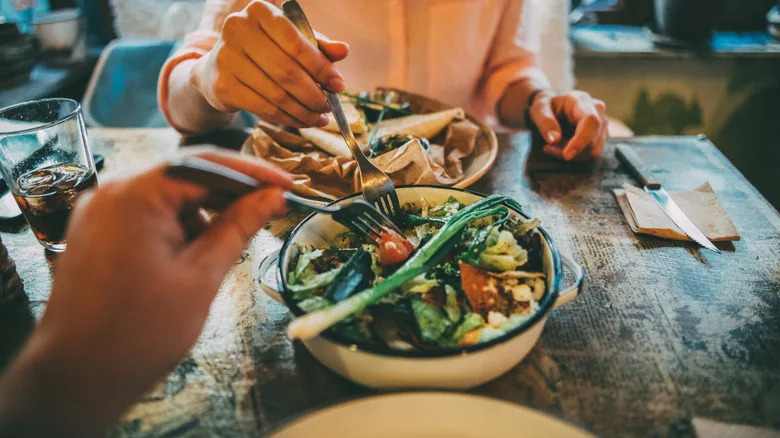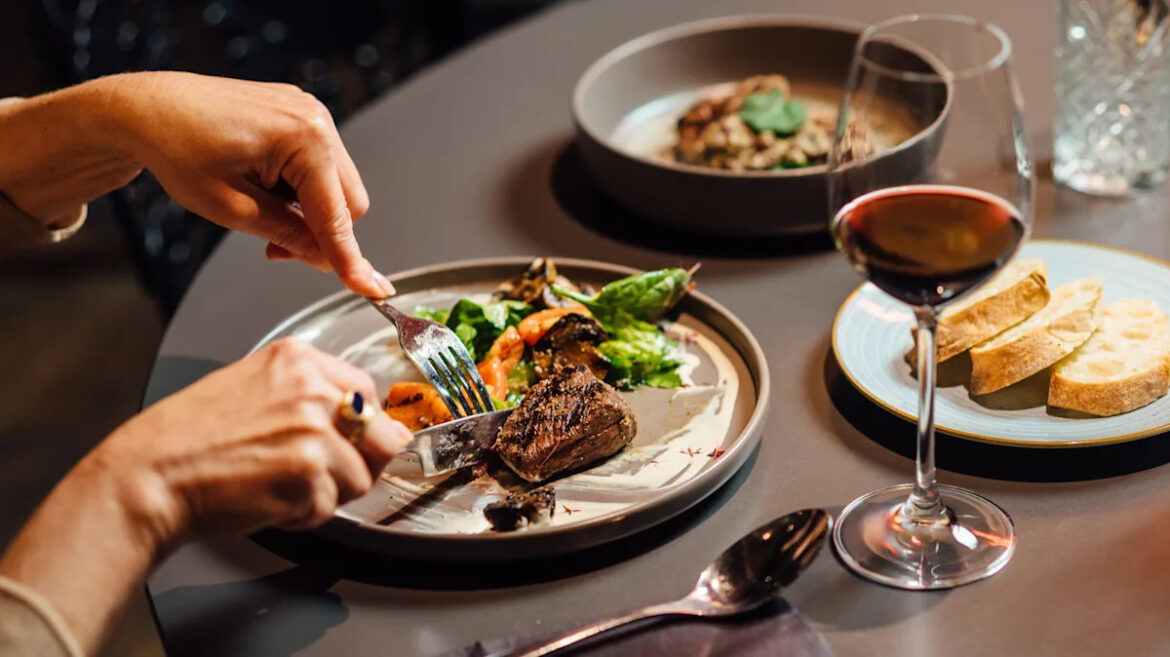Everybody loves the idea of being able to go out to eat on a budget, but sometimes the little tricks we use to shave a few dollars off the bill can have unintended consequences. The reality of dining out is that while menu prices have skyrocketed at restaurants, jumping 30% in five years per the National Restaurant Association, the same has happened to the cost of operation. The cost of food and labor is also up 35% in that same period. So, while you may hear terms like “greedflation,” the fact is that restaurants themselves are also having their budget squeezed. We spoke with Frankie Weinberg, a restaurant manager and co-owner of Good Catch Thai Urban Cuisine and Pomelo, as well as a management professor at Loyola University, who told us that trying to save money by splitting entrees can really hurt a business.
“Some restaurants have a stricter policy regarding splitting plates than others,” Weinberg explains. “But it’s worth keeping in mind that restaurants are one of the last bastions of brick-and-mortar shops.” Indeed, the restaurant manager notes that dining out remains a unique experience that “requires restaurateurs to pay heavily in terms of rent in desirable areas.” Restaurants are extremely low-margin businesses, which means very little of the price you pay — approximately 3 to 5%, according to Weinberg — is actually profit. As Weinberg puts it, that means “each seat needs to pull its weight.” It may be frustrating to hear, but taking up a table and not spending enough per person can mean a restaurant you like is actually losing money when you eat there.
Read more: 8 Unspoken Rules When Dining In Italy
Splitting plates can really hurt restaurants with high fixed costs
Splitting salad at restaurant – Filadendron/Getty Images
When asked to explain the economics of splitting plates, Weinberg says the best way to think about it is breaking things down to fixed and variable costs. “Restaurants pay high labor, rent, and other fixed costs,” he explains, “which are constant expenses regardless of how much is sold, so profitability (i.e., the ability to keep your doors open) depends on average check size for each table.” Ordering half as many items per table reduces the average check size without meaningfully bringing down the cost of doing business.
Weinberg explains that even the cost of labor, like dishwashing and waitstaff, doesn’t change much. “So, at the end of the day, when you split one dish between two people at a restaurant, you’re effectively halving the restaurant’s ability to cover its cost for that table for the shift,” he adds. While we all want to dine out occasionally without spending too much, there are better ways to go about it.
You can stick to ordering the cheaper dishes at a restaurant instead of splitting them, cut back on alcohol, or just limit yourself to more affordable restaurants that have done the math to offer you a cheaper budget meal. Restaurants are going bankrupt all over the country right now over high costs. Most aren’t trying to overcharge you, and tricks like splitting plates only hurt local businesses we all want to see thrive.
Want more food knowledge? Sign up to our free newsletter where we’re helping thousands of foodies, like you, become culinary masters, one email at a time. You can also add us as a preferred search source on Google.
Read the original article on Tasting Table.


Dining and Cooking